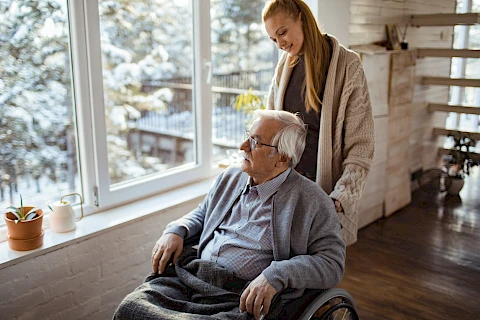
Seasonal Affective Disorder (SAD) is a type of depression that occurs at a specific time of year, usually during the winter months. It affects people of all ages, but seniors are particularly at risk. Recognizing SAD in seniors is necessary because it can significantly impact their quality of life. As caregivers, you can help with identifying and managing SAD in the older adults you care for.
SAD in Seniors
SAD is more than just feeling a bit down during winter. It is a real and serious condition that can affect seniors' emotional, physical, and cognitive well-being. Seniors are especially vulnerable due to changes in lifestyle, health issues, and reduced exposure to natural light. Often, SAD in older adults is misunderstood as a normal part of aging or mistaken for other health problems. You should be able to differentiate these symptoms to provide the right support.
Symptoms to Watch For
As a caregiver, knowing the symptoms of SAD can help you take action early. Watch for emotional indicators such as depression, irritability, and anxiety. These can manifest as a lack of interest in activities they usually enjoy or increased restlessness. Physical symptoms like fatigue, changes in sleep patterns, and appetite changes are also common. Seniors might sleep more than usual or have trouble staying asleep. There might also be an increase or decrease in appetite, leading to weight changes. Cognitive signs, including difficulty concentrating or memory issues, can also appear. Seniors might have trouble focusing on tasks or seem forgetful more often than usual.
Strategies for Support
Supporting a senior with SAD involves several strategies. Encouraging regular physical activity is key. Even a short daily walk can boost mood and energy levels. You should always check with your doctor before starting any new exercises. Promoting social interaction and engagement is another effective strategy. Encourage participation in community events or family gatherings. Social connections can reduce feelings of isolation and lift spirits. Light therapy can be a non-invasive treatment option. Special light boxes mimic natural sunlight and can help regulate mood. Always consult a healthcare professional before starting any treatment.
Creating a Mood-Boosting Environment
Creating a cheerful environment can significantly impact a senior's mood. Maximize natural light exposure by opening curtains and arranging furniture to allow more sunlight. Incorporate uplifting colors and decor into their living space. Bright colors like yellow and orange can have a positive effect on mood. Encouraging hobbies and activities that bring joy also helps. Whether painting, gardening, or playing a musical instrument, engaging in enjoyable activities can be a powerful mood booster.
When to Seek Professional Help
You need to recognize when symptoms are severe or persistent. If the senior you care for shows signs of depression that don't improve, it may be time to seek professional help. Consulting healthcare professionals can provide a proper diagnosis and treatment plan.
Senior Helpers Greater Cincinnati Supports Seniors and Their Caregivers
Recognizing and addressing SAD in seniors is crucial for their well-being. As a caregiver, being proactive in identifying symptoms and implementing strategies can make a significant difference. Remember, you are not alone in this journey. Senior Helpers Greater Cincinnati is here to support and provide professional caregiving services in Hamilton, Fairfield, Middletown, and Milford. Don't hesitate to reach out for assistance and ensure the seniors you care for live their best lives, even during the dreary winter months.